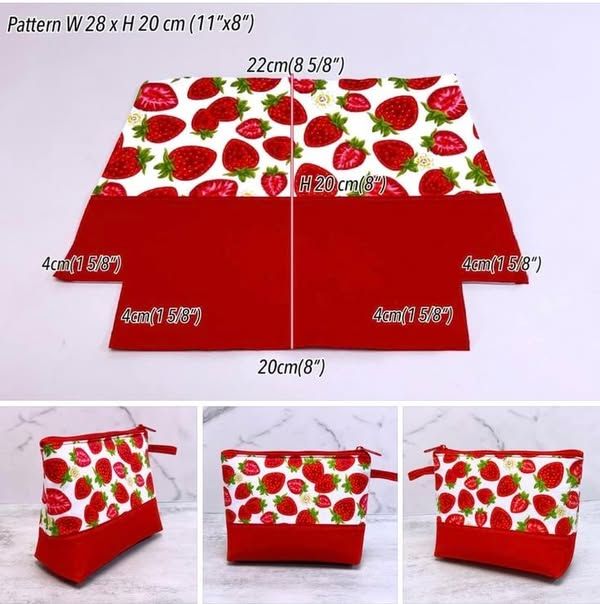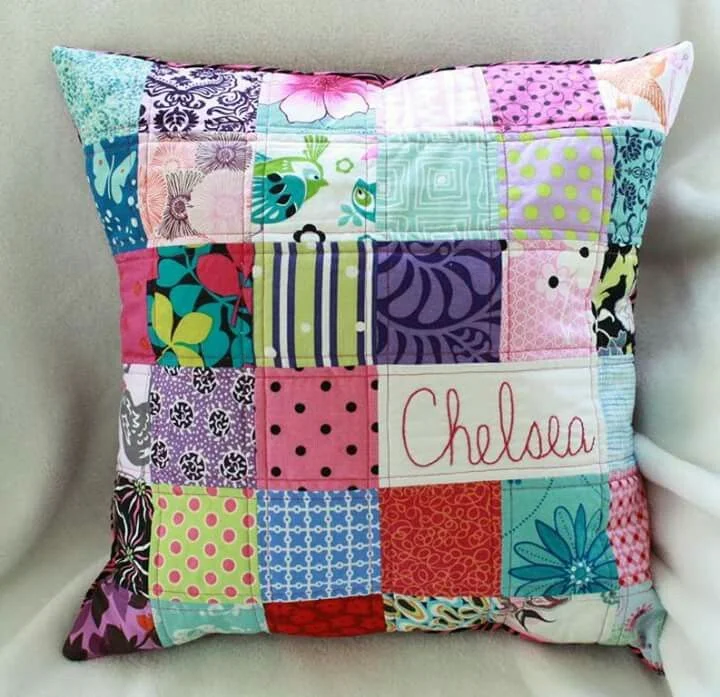
How to make a patchwork pillow with fabric scraps – Quilt Pattern is a wonderful and creative way to transform small leftover pieces of fabric into something both practical and decorative. Instead of letting scraps pile up in a box, you can turn them into colorful quilted pillows that brighten your living room, bedroom, or even outdoor seating. This project is beginner-friendly, fun, and sustainable because it uses what you already have at home.
When people think of quilting, they often imagine large bed quilts that take months to complete. However, creating a pillow is a smaller, more approachable project that allows you to practice quilting techniques without the overwhelming commitment of a full quilt. Learning how to make a patchwork pillow with fabric scraps – quilt pattern gives you the freedom to experiment with colors, textures, and styles, while also enjoying quick and satisfying results.
Beyond being a creative craft, making patchwork pillows also reflects eco-friendly living. Instead of discarding fabric leftovers, you repurpose them into something new and beautiful. Each pillow tells its own story through the unique combination of fabrics, and that makes the piece extra special. Let’s now explore step by step how you can create your own quilted pillow using scraps of fabric you already own.

Before starting how to make a patchwork pillow with fabric scraps – quilt pattern, the first step is to collect the right supplies. Luckily, this project does not require expensive tools, and many items might already be in your sewing corner.
The most important material is, of course, your fabric scraps. These can come from old quilting projects, leftover dressmaking fabrics, or even recycled textiles from clothes. Choosing a variety of textures and prints adds character to your pillow.
You will also need basic sewing notions such as scissors or a rotary cutter, a self-healing cutting mat, pins, sewing thread, and a sewing machine. While hand stitching is possible, a machine makes the process faster and ensures durable seams.
A pillow form or stuffing is essential to give shape to your finished project. Pillow inserts are available in many sizes, but you can also make your own by filling a fabric case with polyfill or even small fabric scraps for extra sustainability.
Do not forget the backing fabric. This piece will form the back of your pillow and should be sturdy enough to withstand use. Cotton or linen works very well for this purpose.
Finally, a zipper, buttons, or an envelope-style closure is needed to finish your pillow. This allows you to remove the cover when needed for washing or swapping out for seasonal décor.
When learning how to make a patchwork pillow with fabric scraps – quilt pattern, one of the most exciting steps is designing your layout. This is where your creativity shines, and you can decide how the fabrics will come together.
The most traditional method is the simple square patchwork. Cutting scraps into equal-sized squares ensures easy piecing and creates a balanced, grid-like design. This method is great for beginners because the sewing process is straightforward.
Another option is to experiment with strips. Strippy patchwork can create a modern look and works well with long, narrow fabric leftovers that might otherwise go unused. Vertical or diagonal strips bring movement and energy to your design.
If you want a more playful appearance, consider using triangles or hexagons. Though slightly more challenging, these shapes create dynamic patterns and give your pillow a distinct character. Templates or quilting rulers help keep these shapes accurate.
Before sewing, it’s useful to lay your fabrics out on a flat surface. Rearrange the pieces until you find a combination that feels visually balanced. Pay attention to color harmony, contrast, and how prints interact with one another.
Sketching your design on paper or taking a photo of your layout can also help. That way, you won’t forget the arrangement when moving to your sewing machine. This design step is key to ensuring your final pillow turns out just as you envisioned.
Now comes the exciting moment in how to make a patchwork pillow with fabric scraps – quilt pattern: sewing your patchwork top. This is where the small fabric pieces become a unified design.
Start by sewing two patches together with a ¼ inch seam allowance. This measurement is standard in quilting and ensures accuracy while keeping seams manageable. Use a consistent seam allowance throughout to keep your design aligned.
Press your seams after sewing each row. Ironing seams open or to one side reduces bulk and helps your pieces fit together neatly. A well-pressed quilt top looks polished and professional, even before it is finished.
Continue joining pieces into rows, then sew rows together. Pin carefully at seam intersections to make sure the corners align correctly. Taking time here gives your pillow a clean, even look.
Once the patchwork top is complete, you may choose to add a thin layer of batting behind it. This gives the pillow a quilted, cushioned feel and enhances texture. Quilting stitches, either straight lines or decorative motifs, can be sewn across the top to secure the layers.
At this stage, admire your work. The patchwork top is now ready, showcasing all the scraps you transformed into something new. Each fabric square, strip, or triangle tells a small part of your crafting story.
The last step in how to make a patchwork pillow with fabric scraps – quilt pattern is assembling your pillow and preparing it for use. This stage pulls everything together.
Place your completed patchwork top right sides together with the backing fabric. Align the edges carefully and pin all around to keep layers from shifting while sewing.
Decide on the type of closure you prefer. An envelope back is simple and requires only overlapping fabric pieces. A zipper closure is a little more advanced but allows easy removal for washing. Buttons can also be a charming decorative option.
Sew around the edges of the pillow cover, leaving an opening for turning. After stitching, trim the corners diagonally to reduce bulk when you turn it right side out.
Turn the pillow cover to the right side and press it with an iron for a crisp finish. Then insert the pillow form or stuffing through the opening or closure you created.
Finally, close the opening securely with topstitching or by completing your zipper or button closure. Congratulations—your handmade patchwork pillow is complete and ready to enjoy!
Each finished pillow is unique, reflecting the combination of fabrics you chose and the techniques you applied. It becomes more than just home décor; it becomes a piece of personal art.
1. Do I need a sewing machine to make a patchwork pillow?
No, while a sewing machine speeds up the process and ensures durable seams, you can sew a patchwork pillow by hand. Just use small, consistent stitches for best results.
2. What size scraps work best for patchwork pillows?
Any size can work, but it is easiest to use scraps large enough to cut into uniform squares or strips. Very small pieces can be stitched into a “crazy quilt” style design.
3. Can I wash my patchwork pillow?
Yes, if you make a removable cover with a zipper or envelope back, the cover can be washed like any other fabric. Always prewash your fabrics before sewing to prevent shrinkage later.
4. What kind of fabric works best for patchwork pillows?
Cotton is the most popular choice because it is easy to sew, durable, and widely available. However, you can experiment with linen, denim, or even recycled clothing fabrics.
5. How long does it take to make a patchwork pillow?
For beginners, it may take a few hours, while experienced quilters can finish in one sitting. The time depends on the complexity of your chosen design.
6. Can children or beginners try this project?
Yes, patchwork pillows are a great introduction to quilting. Children or beginners can start with simple square designs before moving on to more complex shapes.
Learning how to make a patchwork pillow with fabric scraps – quilt pattern is both practical and inspiring. You transform leftover fabrics into something new, creating colorful, eco-friendly home décor that reflects your personality. From gathering materials and designing your layout to sewing and assembling the final pillow, every step is rewarding.
Now that you know how simple it is, why not give it a try? Each pillow you make will be unique and carry a personal touch. I’d love to hear your thoughts—please share your sincere opinion and suggestions on this tutorial. Your feedback helps inspire new ideas and improvements for future projects.